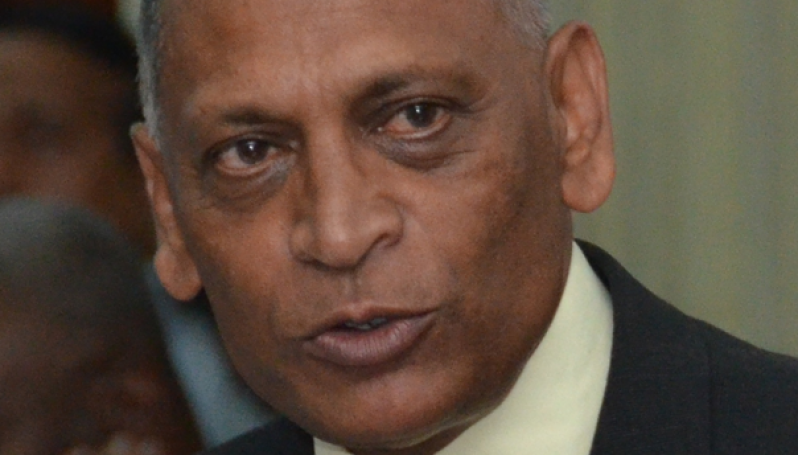– Citing increase in exports, decrease in imports and renewable energy thrust
AS it currently stands, it is reported that the Caribbean Community (CARICOM) imports US$5.2B worth of food every year.
With an intention to intercept this demand for food in the Region, the Minister of Agriculture, Dr. Leslie Ramsammy has outlined Guyana’s Agriculture 2020 Strategy.
In his report to the Parliamentary Sectoral Committee on Natural Resources and the Environment, on Monday, the Minister pointed out that the strategy will address issues of imports, import substitutions and exports in Guyana’s economy.
According to him, “The strategy we are pursuing at the moment takes into consideration the fact that the CARICOM Region imports US$5.2B worth of food and we believe that much of this can be supplied by Guyana.”
Ramsammy maintained that Agriculture should remain the pillar of Guyana’s economy, even with the steady growth of other emerging industries. The Agriculture Minister warned that while other countries have reduced their food and nutritional capacity, Guyana will not move down that path.
‘F5’ APPROACH
The proposed strategy with the intention of achieving 5% growth in the agriculture sector for the next five years will see Guyana solidifying its capacity through a five-tier plan. According to him, the plan is referred to as the ‘F5’ Approach. F 1 and 2 will address issues of consolidating Guyana’s food and nutritional security statuses, respectively.
F3 will see the exploration of utilising agricultural products for the formalisation of an energy sector to drive the energy demand of the industry. Meanwhile, F4 will address the use of agricultural products in cosmetics and medicine. The minister disclosed that there is currently a demand from the European markets for Virgin Coconut Oil for the cosmetic industry, which he believes Guyana can provide.
Finally, the fifth approach, F5, will address the use of agricultural products for furniture and other craft.
IMPORT SUBSTITUTIONS
Recognising the country’s potential for producing many of the products it imports, the Minister proposed that there ought to be a reduction in food imports such as corn, soya, potato, garlic, onion and spices. He noted that “all of these crops are presently being grown in either test plots or in farmer’s plots” in the country.
Some accomplishments have already been recorded where Guyana no longer imports cauliflower and broccoli, “because we now have local production.” Minister Ramsammy noted that these proposals of 50% reduction in the import of products produced by Guyana should be recognised by 2020.
INCREASE EXPORTS
On the supply side of things, the Minister observed that the aim is to stabilise sugar production to 450,000 tonnes by 2020, with a short term goal of 350,000 tonnes by 2017. In relation to rice production, he said, “We want to increase rice production to 6 tonnes per hectare by 2020. At the moment, we are about 5.4 tonnes per hectare, and this is increasing from about 2 and a half tonnes from the early 1990s.”
The Agriculture Minister alluded to the much needed increase of non-sugar and non-rice exports by “a minimum of 25% by 2020.” Similarly, there is some hope that there will be an increase in agro-processed production in Guyana by 50% and the production of 50,000 litres of bio-fuel on a commercial scale. In an invited comment, Minister Ramsammy noted that as an example, his vehicle as well as a few of the Government’s vehicles are run using fuel made from agro-processed bio-fuel mixed with traditional fuels.
“The demonstration plant at Albion has demonstrated its potential and we are now looking at using other substrates other than molasses for bio-ethanol, such as cassava,” Minister Ramsammy remarked.
With an aim of reducing milk imports by 50% by 2020, meeting the local demand for milk and dairy products, Ramsammy bemoaned the fact that Guyana currently imports over US$25M worth of milk. “We want to see a dairy industry that is formalised and at least one dairy plant operating at a commercial basis by 2020.”
A plant which will produce at least one value added product such as cheese in addition to pasteurising, he added.
Minister Ramsammy confidently asserted that this is the first time that any CARICOM country has orchestrated an Agriculture Strategy; he noted that while other countries have sub-sector strategies, Guyana has adopted the approach of an overall strategy.
(By Derwayne Wills)




.png)









